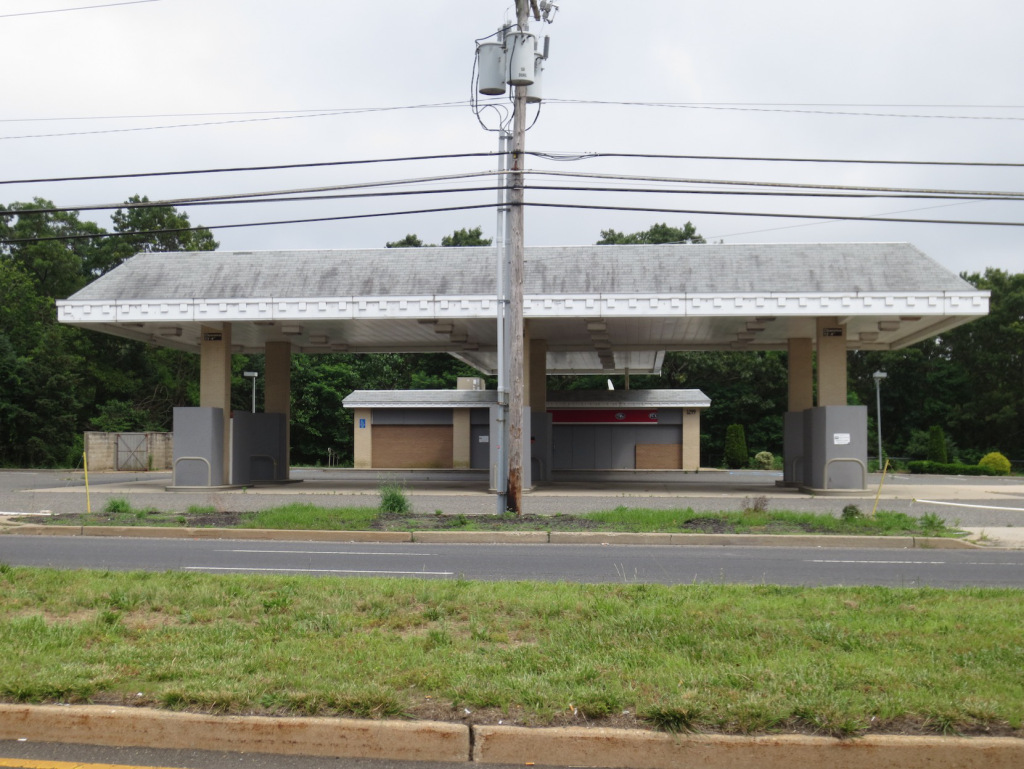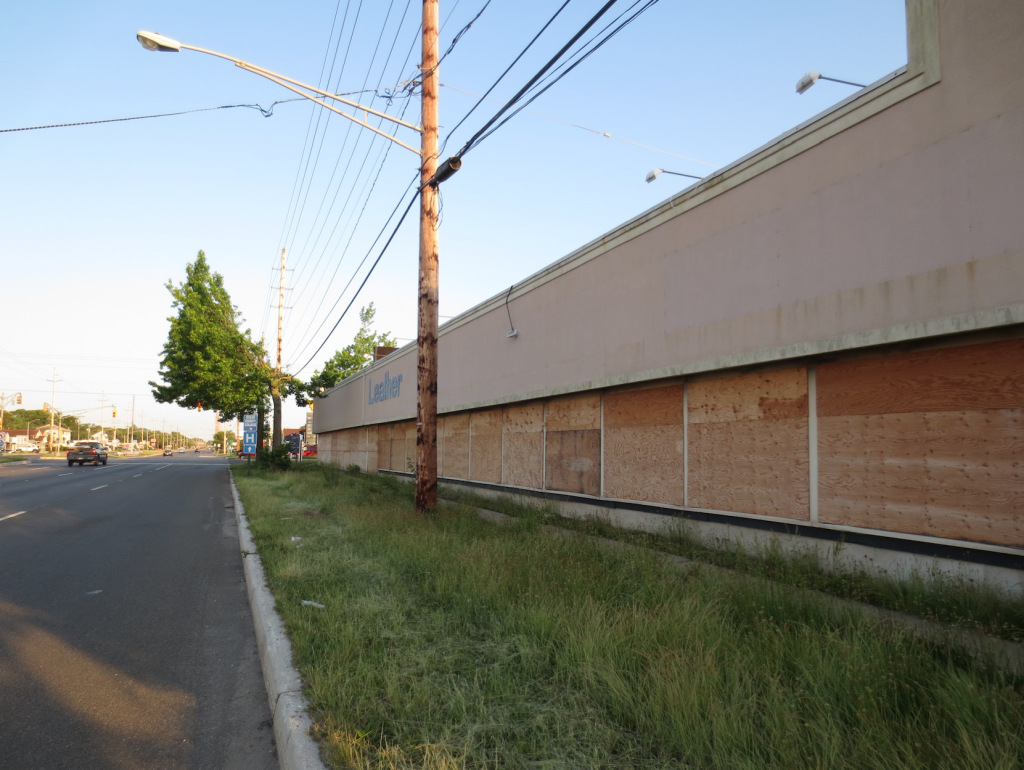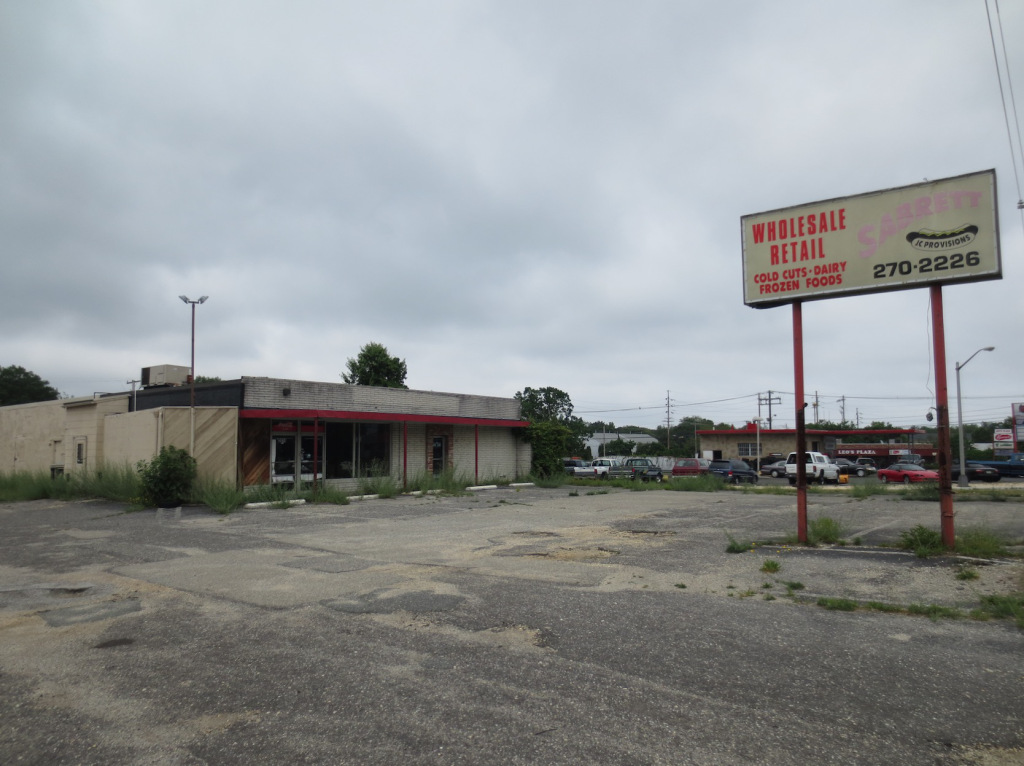The Great Hollowing Out
After years of moving around my family ultimately settled in Toms River, New Jersey. Toms River is consistently ranked among the “best places to live,” “best places to raise a family,” “best places to retire” and so on. For most of its history, it remained a quiet agricultural town that served as the county seat. The Garden State Parkway opened in the 1960’s just in time for urban race riots and white flight to the suburbs. My family was part of that migration out of New York.
The corn fields and pine forests around Toms River were quickly transformed into a wonderland of tract homes, strip malls, and office parks. State and federal highway funds meant ever-expanding roads. Zoning regulations were enacted that guaranteed that under no circumstances could anything like a dirty, congested, crime-ridden, high tax city ever be built anywhere near Toms River. For a few decades, Toms River boomed as white middle class people poured in from North Jersey in search of cheaper homes, lower taxes, better schools, and a more verdant environment. It was the right place at the right time.
The downtown. (image from Google maps)
The new shopping mall. (image from Google Maps)
I remember the Ocean County Mall being constructed in 1976 and watching the downtown shops close one by one. The movie theater, the clothing stores, the restaurants, and small mom and pop shops all shut their doors. The Google images above show the mall and adjacent big box stores at the same scale as the old downtown. The mall didn’t add to the town’s business district. It replaced it.
from Google Maps
from Google Maps
The authorities aggressively dismantled most of the historic downtown in favor of surface parking lots, multistory parking garages, and expanded municipal buildings. I colored the parking areas red above. Much of the space that isn’t parking is grass. There’s about a block and a half of Main Street left and the buildings have been half empty since I was in middle school.
The town has effectively been removed and transformed into a municipal version of an office park. That was an intentional triumph of the planning and redevelopment agencies. In a concerted effort to prevent the town from becoming “urban” some of the most valuable waterfront property in the region is now mostly government owned asphalt. The people of Toms River like it that way. It’s convenient and tidy and nothing "bad" ever happens there.




But here’s the problem. Toms River’s suburban matrix is aging. Badly. Sure, there are plenty of new big box stores and luxury gated communities on the far edge of town. And waterfront homes are commanding premium prices as always. But all up and down the commercial arterials things are looking decidedly seedy. I remember when many of these buildings were new. It didn’t take long for them to fully depreciate and start to fester. These empty shops and dead gas stations do nothing for the surrounding residential subdivisions. These junky throwaway establishments are what passes for the public realm in Toms River. No one has ever cared about any of it, and no one ever will. People who can afford to move have already started to migrate to better neighborhoods.
In fact, Toms River is no longer the preferred destination for people looking for the next better cheaper place. Many of the kids I went to high school with are now in North Carolina, Florida, Georgia, and Texas. Toms River lost its comparative advantage as homes became more expensive, taxes rose, and the general quality of the place peaked and declined.
photo from Google Maps
photo from Google Maps
photo from Google Maps
photo from Google Maps
So what exactly happens to the sad empty buildings that line the side of the six lane arterials? I noticed whole blocks have been cleared to make way for new self storage facilities. It makes sense. These locations are no longer viable for commercial real estate and they’re even worse as residential property. Storage sheds are large, quiet, and relatively benign. They don’t employ very many people, generate much tax revenue, or do anything for the neighborhood, but they make excellent buffers and fill the void.
photo from Google Maps
Another option is to clear the land and replace it with the next generation of roadside commerce. In the above image, you can see a convenience store and its associated gas station fill an entire block. The store itself is pretty small. The gas station is a roof covering a row of pumps. Everything else is surface parking and storm water retention ponds. I want you to look at the amount of public infrastructure surrounding this block. The roads, sidewalks, underground pipes and such.
photo from Google Maps
photo from Google Maps
photo from Google Maps
Above is the surviving block of Main Street downtown. Even in its greatly diminished form after decades of neglect these half empty buildings are in relatively solid shape and provide a greater return on the public infrastructure investment.
Toms River doesn’t know it yet, but it’s in the early stages of contraction. Its development pattern is such that the town can never meet all its obligations. As a result, taxes will continue to be forced upward and public services will decline. The local culture is vehemently opposed to the kind of infill development that would generate more wealth for the town. The most prosperous members of the community are also the most mobile and have no particular allegiance to the place. Toms River was built as a collection of convenient commodities and it will be discarded once it exceeds its usefulness. Will the decay happen all at once? Not really. The town will fail in chunks over many years as the lesser neighborhoods slide. Does it have to be this way? No. But it’s easier to move than fix what’s wrong with the place. Remember how the middle class once fled the cities for greener pastures?
(All photos by Johnny Sanphillippo unless otherwise noted)




















You can learn a lot about a place by how easily you can do some great Christmas shopping.